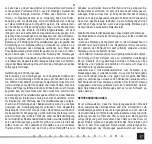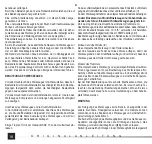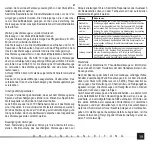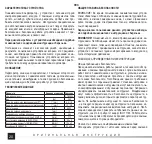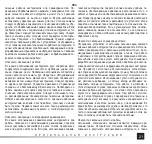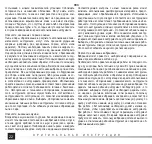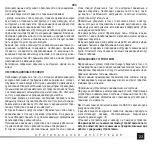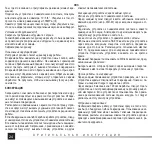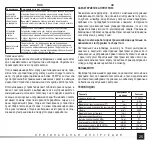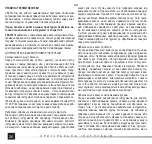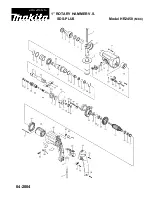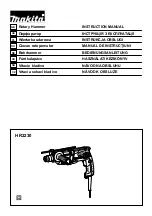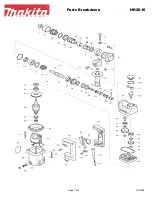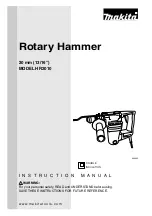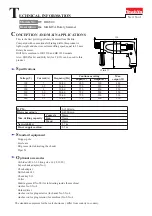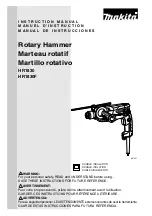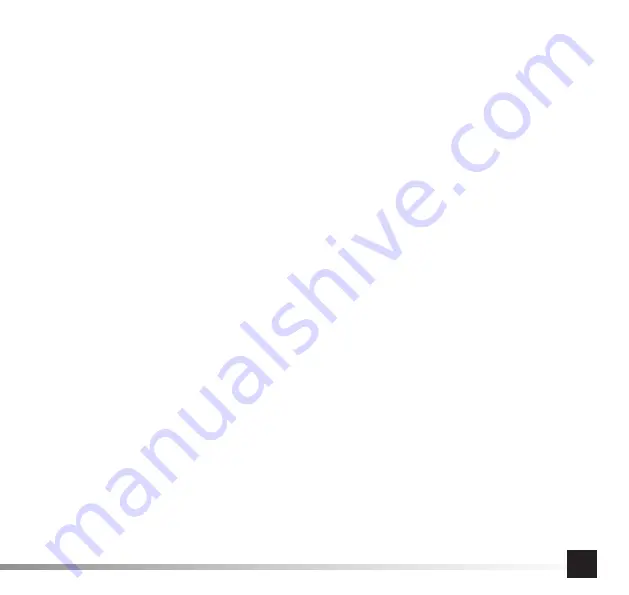
11
GB
O R I G I N A L I N S T R U C T I O N S
third parties should be taken into account. Make sure, that the ob-
ject processed is attached securely. Do not work with a tool without
making sure that the limiter of tool inserted has been installed. To
avoid injuries, replace the limiter as soon as it has been used, bro-
ken or deformed. Before the work fi rmly apply the tool inserted to
processed surface.
The threat associated with operation
A tool while operating may expose operator’s hands to threat such
as: crushing, hitting, cutting off , rubbing or heat. Wear proper gloves
to protect your hands. An operator and maintenance staff should
be physically capable to deal with number, weight and power of the
tool. Keep the tool the correct way. Keep balance and position of
foot that guarantee your safety. Release the pressure applied on
start/stop device in case of power failure. Use only lubricants that
are recommended by the manufacturer. Avoid direct contact with a
tool inserted during and after completion of work, it may be hot. Use
protective goggles, it is recommended to wear well matching gloves
and protective clothes.
Threats associated with repeated movements
When using a pneumatic tool for a work consisting in repeated
movements, the operator is exposed to experiencing a discomfort of
palms, arms, neck or other body parts. In case of using a pneumatic
tool, the operator should adopt comfortable position ensuring proper
foot posture and avoid strange posture or postures not guaranteeing
stability. An operator should change his posture during prolonged
work, this will help avoiding discomfort and fatigue. If an operator
is experiencing symptoms such as: long-term or repeated discom-
fort, pain, pulsating pain, tingling, numbness, burning or stiff ness,
he should not ignore them, should tell about that his employer and
consult with a physician.
Threats associated with accessories
Disconnect the tool from power source before the replacement of
tool inserted or accessory. Use accessories and consumables only
in sizes and of types recommended by the manufacturer. When ap-
propriate, never use any chisels as hand tools in case of hammers.
They have been designed and subjected to heat treatment with re-
gard to use only with non-rotary impact tools. When appropriate, in
case of hammers and crushers, never use blunt chisels, as they are
subjected to big load and may break due to fatigue of material. Use
of blunt tool may increase oscillations and that is why sharp tools
should be used. In case of hammers, when appropriate, never cool
down the hot inserted tools in water, this may result in brittleness and
premature wear. In case of hammers, when appropriate, damage or
breaking of tool may result from improper use of tool as a lever, e.g.
when leveraging. It is better to work by removing small fragments
which will allow avoiding jamming. Avoid direct contact with a tool
inserted during and after completion of work, it may be hot or sharp.
Threats associated with work place
Slipping, stumbling and falls are main causes of injuries. Avoid slip-
pery surfaces caused by using the tool, as well as risk of stumbling
caused by hoses with compressed air. Take care in an unknown
environment. There may exist hidden threats, such as electricity or
other utilities. Pneumatic tools are not designed for use in areas ex-
posed to explosion and are not isolated from contact with electric
power. Make sure, that there are no electric conductors, gas pipes
etc. that may pose a threat in case of any damage caused by the
tool.
Threats associated with vapours and dusts
Dust and vapours generated by use of pneumatic tool may cause
bad health condition (for example a cancer, birth defects, asthma
and/or skin infl ammation), indispensable are: risk assessment and
implementation of proper control measures in relation to these
threats. Risk assessment should include eff ect of dust generated by
tool and possibility of stirring the existing dust. Air outfl ow should be
directed in such a way as to minimize stirring of dust in dusty envi-
ronment. In environment of dust or vapours, the priority is to control
them at the source of emission. All integrated functionalities and
accessories for collecting, extracting or minimizing dust or smoke
should be properly utilized and maintained pursuant to manufactur-
er’s recommendations. Use respiratory tract protectors, in accord-
ance with employer’s instructions and in compliance with hygiene
and safety requirements. Operation and maintenance of pneumatic
tool should be carried out in accordance with instructions contained
in user manual, this will allow minimizing the emission of vapours
and dust. Select, maintain and replace tools inserted in accordance

















